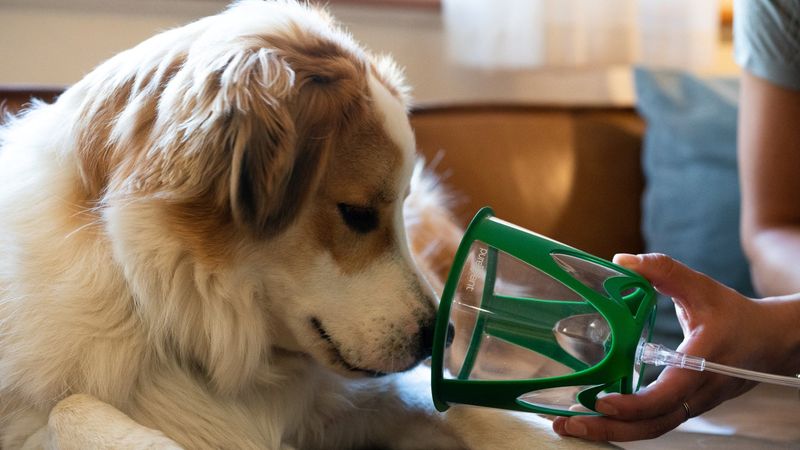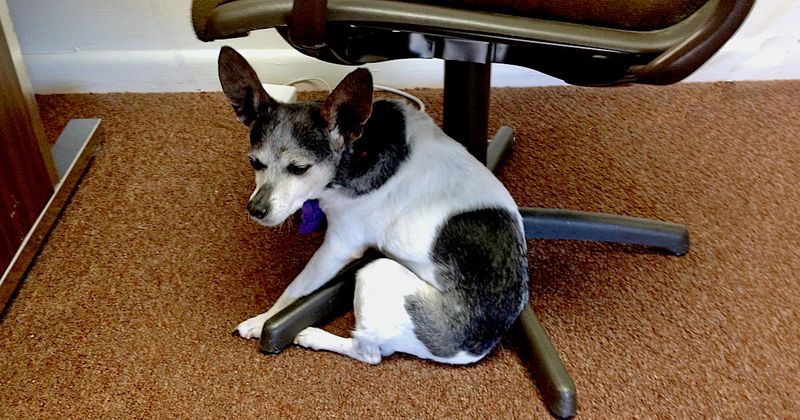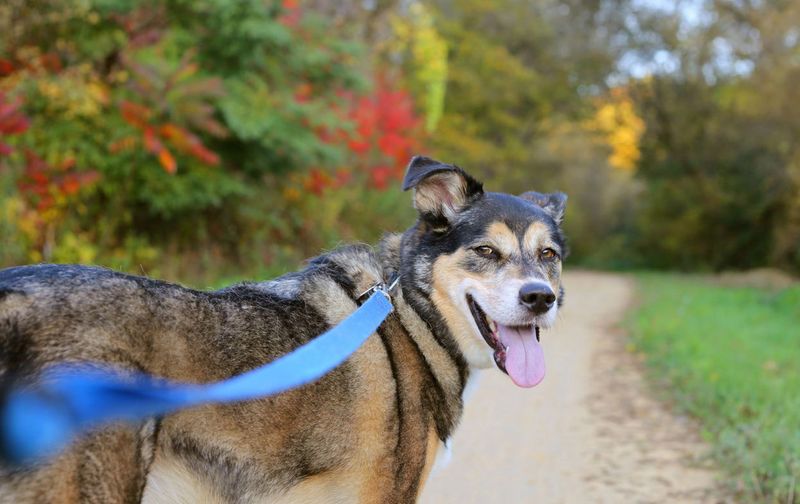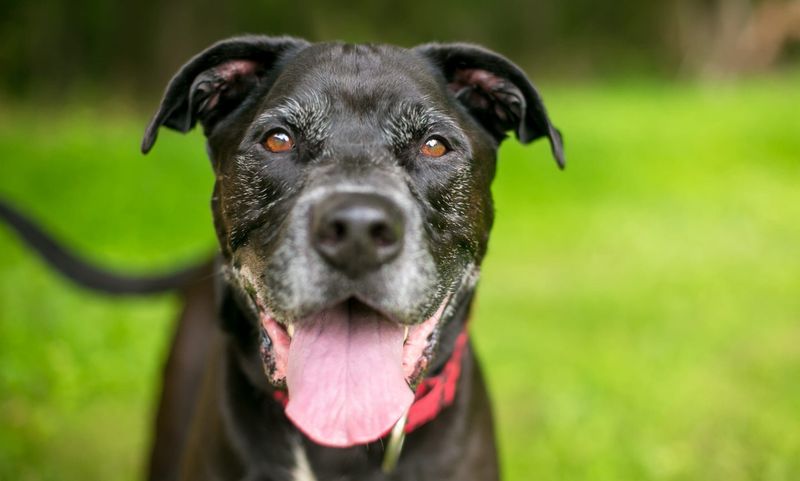9 Clues Your Dog May Be Nearing The End Of Life (And 6 Signs They’re Still In Good Health)

Watching our furry friends grow older is both a privilege and a heartache. Dogs age faster than humans, making it crucial to recognize when they might be entering their final chapter.
Understanding the signs of declining health, as well as indicators of continued vitality, helps us provide the best care during every stage of their lives.
This guide will help you recognize important clues about your dog’s well-being, allowing you to make informed decisions about their comfort and quality of life.
1. Dramatic Weight Loss Without Dieting

Unexplained weight loss in senior dogs often signals something serious. When your pup starts looking noticeably thinner despite eating normally, their body might be struggling with disease or organ failure.
Look for prominent ribs, spine, or hip bones that weren’t visible before. Some dogs may lose as much as 10% of their body weight within weeks without any dietary changes.
This weight loss differs from healthy slimming – it comes with muscle wasting rather than just fat reduction. Always consult your vet promptly if you notice this change, as early intervention can sometimes extend quality time together.
2. Severe Mobility Issues That Medication Can’t Fix

Your once-playful companion now struggles to stand up from their bed. They might whimper when attempting stairs or refuse walk altogether. These aren’t just signs of normal aging – they indicate profound joint deterioration or neurological problems.
Many dogs nearing life’s end experience rear leg weakness first. You might notice trembling limbs, reluctance to move, or your pet dragging their back legs when trying to walk.
While medications help many arthritic dogs, when these treatments stop working, it often signals advanced deterioration. Dogs experiencing this level of mobility loss frequently struggle with basic dignity needs like reaching their bathroom spot.
3. Refusing Food For Multiple Days

Even the most food-motivated dogs eventually lose interest in eating when approaching life’s end. This isn’t just skipping a meal – it’s a persistent refusal lasting days, even when offered favorite treats.
The survival instinct to eat is incredibly strong in dogs. When they override this basic drive, it typically signals significant internal distress or systemic failure.
You might notice them sniffing food, then turning away, or taking a bite before spitting it out. Some dogs will still drink water but avoid solids entirely. This behavior differs from occasional pickiness and represents a fundamental shift in their relationship with food, often indicatinga serious decline.
4. Breathing Difficulties That Worsen At Rest

Labored breathing when your dog is simply lying down often indicates serious cardiopulmonary issues. You might notice their sides heaving, extended neck posture, or open-mouth breathing even during rest.
Dogs nearing the end sometimes develop a distinctive breathing pattern – shallow, rapid breaths interspersed with concerning pauses. Their gums may appear bluish or pale rather than healthy pink.
Unlike temporary breathlessness from exercise, end-of-life respiratory struggles don’t improve with rest. This type of breathing difficulty causes genuine distress and can indicate fluid in the lungs, heart failure, or other terminal conditions. Many owners describe this symptom as particularly difficult to witness in their beloved pets.
5. Sudden Confusion Or Disorientation

Your dog suddenly seems lost in familiar surroundings, staring at walls, getting stuck in corners, or failing to recognize family members. This cognitive decline resembles dementia in humans and often accelerates near life’s end.
Some dogs begin pacing restlessly at night or standing in odd places, seeming unsure of what to do next. They might bark at nothing or appear startled by ordinary household objects.
While mild cognitive changes happen gradually with age, sudden, dramatic shifts in awareness often signal something more serious. Brain tumors, strokes, or advanced organ failure can all manifest as rapid cognitive deterioration. This disorientation can be particularly heartbreaking as your once-attentive companion seems to drift away mentally.
6. Incontinence Despite Regular Bathroom Access

House-trained dogs rarely lose bladder or bowel control without a serious cause. When your previously reliable pet begins having accidents despite regular opportunities to go outside, it often signals neurological decline or organ failure.
You might find your dog soiling their sleeping area – something most dogs instinctively avoid. Some may seem distressed or confused after these accidents, while others show no awareness.
This isn’t just occasional accidents but a consistent pattern of inability to control elimination. While various medical conditions can cause temporary incontinence, persistent issues that don’t respond to treatment often indicate systems shutting down. Many pet parents consider this symptom particularly significant when evaluating quality of life.
7. Extreme Fatigue That Never Improves

All senior dogs slow down, but profound exhaustion that never lifts signals something more serious. Your once-energetic companion now spends nearly all day sleeping, showing little interest in activities they once loved.
Even short walks may leave them exhausted for hours afterward. You might notice they no longer greet you at the door or lift their head when favorite visitors arrive.
This fatigue differs from normal aging – it’s a complete energy collapse rather than just slowing down. Dogs approaching life’s end often experience this profound tiredness as their bodies conserve remaining resources. While medication helps some conditions causing fatigue, persistent exhaustion despite treatment often indicates approaching end-of-life.
8. Social Withdrawal From Beloved Family

Dogs are naturally social creatures who typically seek connection even when unwell. When your pet deliberately isolates itself, hiding in closets or under furniture away from family, it’s often communicating serious distress.
You might notice they no longer follow you between rooms or seek attention. Some dogs will actively get up and leave when approached, preferring solitude over the comfort they previously sought.
This behavior stems from ancient instincts – in the wild, vulnerable animals separate from their pack when dying. While temporary withdrawal can happen with minor illnesses, persistent isolation from beloved humans often signals your dog’s awareness of their declining condition and represents a significant change in their fundamental nature.
9. Persistent Pain Despite Medication

Dogs instinctively hide discomfort, so visible pain signals serious issues. You might notice subtle signs like shallow breathing, reluctance to be touched, or unusual vocalizations like whimpering or groaning.
Some dogs develop a fixed stare or glazed expression when pain becomes constant. Others show a hunched posture or a tense abdomen even when resting comfortably.
While medications help many conditions, when multiple pain management approaches fail to provide relief, it often indicates advanced disease progression. Persistent pain that medication can’t control significantly impacts quality of life and frequently appears in a dog’s final weeks. This symptom weighs heavily in end-of-life decisions for many compassionate pet owners.
10. Enthusiastic Mealtime Behavior

Healthy dogs maintain a consistent interest in food. Your pup’s excitement at mealtime – the happy dance, tail wags, or eager monitoring of food preparation – signals that their fundamental systems are working properly.
Many dogs display charming mealtime rituals, from spinning circles to playful barks. This food enthusiasm indicates functioning digestion, appropriate appetite regulation, and basic wellness.
While occasional skipped meals happen even in healthy dogs, consistent food interest reflects vitality. Dogs who maintain normal eating patterns through senior years typically have better overall health. This reliable interest in meals represents one of the most basic yet meaningful indicators that your dog is still enjoying the fundamental pleasures of life.
11. Maintaining Regular Sleep Patterns

Healthy older dogs generally maintain consistent sleep habits. While they may sleep more than younger dogs (often 16-18 hours daily), the quality of their rest remains peaceful and restorative.
Look for your senior dog cycling normally between deeper sleep and lighter dozing. They should wake refreshed, stretch comfortably, and transition easily between sleep and wakefulness.
Healthy dogs maintain the ability to sleep through the night without restlessness or confusion. Their breathing remains regular during sleep, without labored effort. This normal sleep pattern indicates their neurological and respiratory systems are functioning well despite aging, and represents an important indicator of continued quality of life.
12. Continued Interest In Short Walks

Healthy aging dogs still enjoy gentle exercise. While they might not chase balls for hours anymore, their willingness to explore the neighborhood indicates good physical and mental health.
You’ll notice your senior pup still perks up at the sight of a leash. They may move more slowly but show genuine interest in outdoor scents and sights during brief excursions.
This continued walking enjoyment signals functioning joints, adequate cardiovascular health, and mental engagement with the world. Even if walks become shorter or require occasional rest breaks, the fundamental desire to venture outdoors represents an important quality-of-life indicator. Many veterinarians consider this maintained interest in exploration a positive sign in aging pets.
13. Appropriate Response To Familiar People

Dogs with good cognitive function maintain recognition of family members. Your senior pet may not jump up anymore, but their eyes brighten when you enter the room, tail wagging or ears perking up in acknowledgment.
Healthy older dogs still differentiate between household members and strangers. They display appropriate excitement when ftheir avorite people return home, even if their greeting is more subdued than in their younger years.
This continued social recognition indicates preserved brain function despite aging. While some mild confusion might occasionally occur in healthy senior dogs, consistent recognition of beloved humans signals their cognitive abilities remain intact. Many veterinarians consider this social awareness an important indicator of maintained quality of life in aging pets.
14. Maintaining Bathroom Independence

Healthy older dogs preserve their house-training abilities. Your senior companion still communicates bathroom needs – perhaps standing by the door, giving a specific bark, or using a doggy door independently.
While they might need more frequent opportunities to go outside, they maintain awareness of appropriate elimination locations. This bathroom independence indicates preserved neurological function and body awareness.
Even with some physical limitations, healthy senior dogs actively try to maintain their cleanliness standards. They might move more slowly to their spot or require more frequent breaks, but the fundamental understanding of bathroom etiquette remains intact. This preserved dignity around elimination needs represents an important aspect of continued quality of life.
15. Moments Of Playfulness Despite Age

Even gray-muzzled seniors show occasional bursts of puppy-like joy when healthy. Your older dog might suddenly grab a favorite toy, initiate a gentle game, or perform their version of a “play bow” invitation.
These playful moments might be briefer than in youth, but their spontaneous appearance signals good neurological health and emotional well-being. Some senior dogs develop charming new play styles adapted to their changing bodies.
While not occurring with youthful frequency, these playful interludes indicate your dog still experiences joy and engagement. Many veterinarians consider occasional playfulness an excellent sign in aging pets. These moments of delight, however brief, suggest your companion still finds genuine happiness in life’s simple pleasures.






